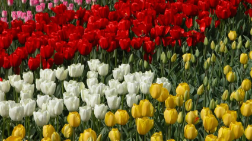Harness the beauty and ecological importance of Flower:Bprkp9rydoy= Spring

Flower:Bprkp9rydoy= Spring serve as a vital marker of seasonal change, embodying themes of renewal and ecological balance. The vibrant colors of tulips, daffodils, and cherry blossoms not only enhance our landscapes but also play a crucial role in supporting local ecosystems by attracting essential pollinators. However, the cultivation of these blooms requires a nuanced understanding of their specific care needs, from soil conditions to watering practices. As we explore the significance and requirements of these flowers, we may uncover deeper insights into their role in promoting biodiversity and sustaining our environment.
The Significance of Spring Flowers
Spring flowers hold significant ecological and cultural importance, serving as vital indicators of seasonal change while also contributing to biodiversity and ecosystem stability.
Their emergence marks the transition from dormancy to vitality, symbolizing renewal and hope.
These blooms carry diverse symbolic meanings across cultures, reflecting humanity’s deep connection to nature and the cyclical patterns that govern life, reinforcing the importance of understanding seasonal changes.
See also Discover the unexpected Drawing:Oonij0pwk0w= Corn
Popular Spring Blooms
The vibrant array of popular spring blooms, such as tulips, daffodils, and cherry blossoms, not only enhances the aesthetic landscape but also plays a fundamental role in supporting local ecosystems and attracting pollinators.
Diverse tulip varieties, including fringed and parrot types, showcase an impressive spectrum of colors.
Similarly, daffodil colors range from bright yellows to delicate whites, enriching gardens and natural spaces alike.
Caring for Spring Flowers
Effective care for spring flowers requires a thorough understanding of their specific needs, including optimal light conditions, soil composition, and watering schedules to ensure robust growth and vibrant blooms.
Employing appropriate watering techniques, such as deep soaking rather than surface misting, promotes root development.
Additionally, proactive pest management strategies, including natural repellents, help maintain plant health while preserving the freedom of a thriving garden ecosystem.
See also With expert techniques in line work, shading, and color Drawing:Ox04kafpixm= Starfish
Conclusion
In conclusion, the vibrant display of spring flowers serves as a poignant reminder of nature’s renewal and resilience.
While these blooms symbolize hope and new beginnings, their reliance on specific care underscores a paradox: the fragility of beauty amid the complexities of ecological interdependence.
Thus, the act of nurturing spring flowers becomes a testament to human stewardship, revealing that true abundance thrives not in mere admiration but in conscious engagement with the intricate web of life that sustains them.




